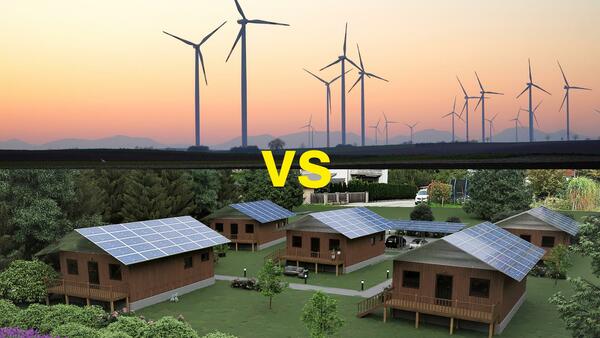France bans new wind turbines - 100% solar not a problemIn the southernmost part of Germany, one kW of photovoltaics supplies 17 kWh in December. In the southernmost part of France, on the other hand, it is 41 kWh.On March 8, a striking ruling by the French Council of State significantly changed the landscape of wind energy development. In an unprecedented move, the court declared the permits for the construction of onshore wind turbines invalid.
With a very low standard of living, renewable energy was sufficient for a billion people by 1800. Ships sailed on wind energy or were pulled upriver by horses. Transportation on land with draft animals. Heating with wood. The age of 100% renewable energy ended with the industrial revolution. It took a long time for the problems of fossil fuels to be recognized. In 1895, Svante Arrhenius recognized the problem of the greenhouse effect. It then took an incredible 61 more years to arrive at the peak oil theory of Marion King Hubbert in 1956. What now? A group of lunatics chiseled in stone in 8 languages that humanity should be reduced to 500 million. You get such crazy ideas when you deny all technological progress and are convinced that you belong to an elite that is not affected by it. Others were working on a vision of the future with the technologies available at the time: The beginnings of photovoltaics, wind energy and biomass. At that time, lead batteries were very inadequate as electricity storage devices. Hydrogen was the only known method of converting electricity into a chemical energy carrier and later turning it back into electricity. Back then, when the global production of photovoltaics was four orders of magnitude smaller than it is today, the sun/wind complementary theory was born. There is more solar energy in summer, there is more wind energy in winter, so you have to expand in such a way that they complement each other perfectly. This resulted in a very wind energy-oriented energy model. This also matched the prices at the time, when photovoltaics were almost two orders of magnitude more expensive. This supplementary theory has now been abandoned. Germany's expansion plans include 400 GW of photovoltaics and 250 GW of wind power. This would require considerable amounts of summer/winter balancing, but this is being ignored. Where would we end up if reality ruined the best theories?

I carried out this simulation with the weather data from 2008 in 2021. Several findings were derived from this that stand in stark contrast to widespread opinions.
Is much easier than Germany 100% solar. In the southernmost part of Germany, one kW of photovoltaics delivers 17 kWh in December. In the southernmost part of France, on the other hand, it is 41 kWh. For comparison, in the southernmost part of Norway it is not even 4 kWh. It is therefore clear that the summer/winter balance is a much smaller problem for France.
Opposition to wind energy in Germany grew when wind turbines began to be erected in forests due to a lack of other areas. Resistance to photovoltaics grew when huge areas of nature began to be covered with photovoltaics. On the one hand, the built-up nature, on the other hand, the childless family in the worker's dormitory, who are firmly convinced that they cannot afford children and that children have a very sad future. As a society, we cannot afford this madness. The solution is energy-optimized residential areas.
With GEMINI next generation houses and a central structure generously covered with photovoltaics, even 1.2 MW is possible.
A club member donates their membership fee to the club and is happy if the club is successful. If not, I have supported a good cause. A shareholder acquires shares in a public limited company. If the AG is successful, his shares are worth much more. In the case of GEMINI next Generation AG, his reward for supporting a good cause. As a shareholder, employee or home buyer, you also become part of the counter-movement against many negative, anti-survival developments in our society. One new shareholder said "I with my very modest investment", but €4,000 times €1,000 is also €4 million for all investments up to the opening of the settlement in Unken as a starting point for global expansion. There is a reward program for recommending the share to others. Two of the new shareholders have become shareholders through this reward program. Here are the details. |

